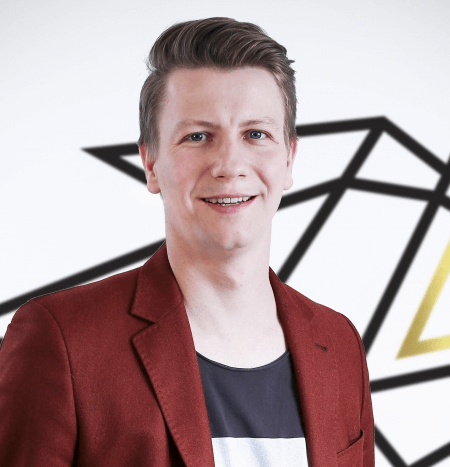How do we work?
We are open to various forms of cooperation and can flexibly adapt to your needs. You can pick one particular service, use chosen services from our offer, or go through the entire design process with us.
We discover
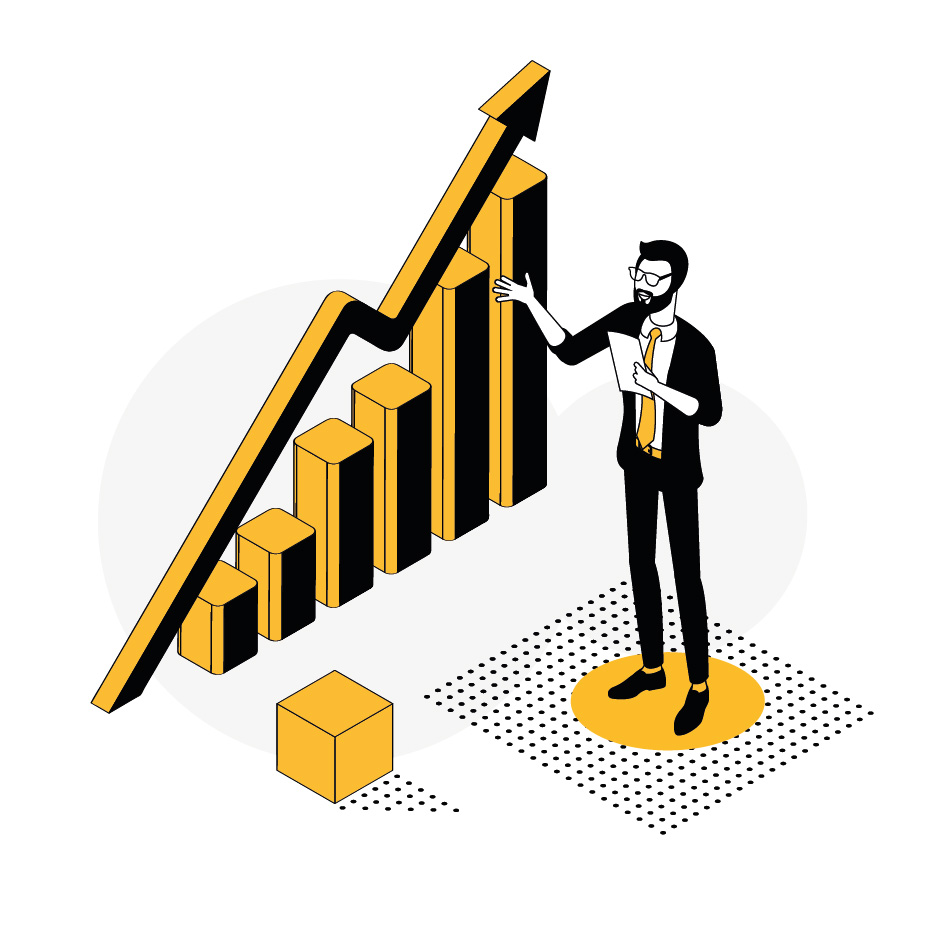
Analysis
We use quantitative and qualitative data that allow us to better understand the behavior of users when they use given product or service. We analyze data, recordings of sessions with users and heatmaps - it gives us an insight into recipients’ behavior. Identifying key processes and crisis points in the current process is essential for product development and help us determine if we are going in the right direction.







Competitor Analysis
Competition analysis helps us to identify their strengths and weaknesses. At this stage, we also define the standards specific for the studied market area. This way we are able to create a project that stands out from the competition, and at the same time is easy to understand for a typical recipient interested in a given subject.
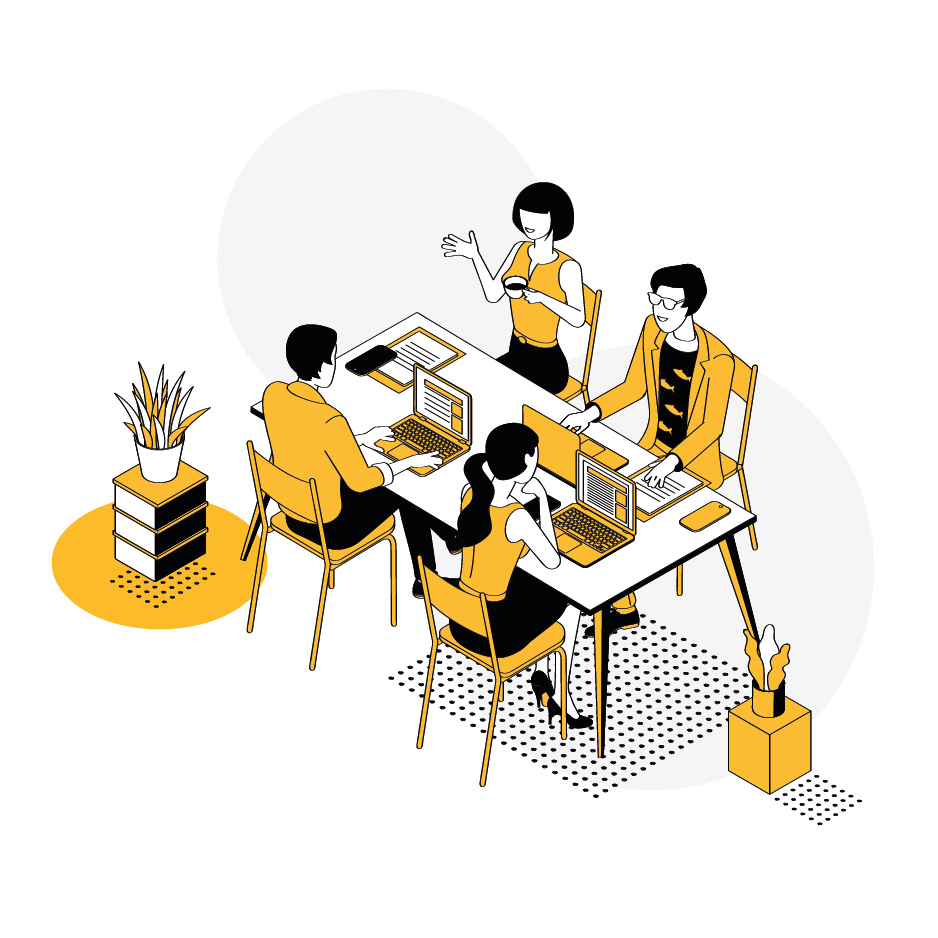
Workshop before the kick-off
Thanks to workshop meetings, we develop a vision of the project execution which is mutually agreed upon. This is where your needs and expectations meet our knowledge and competences. We create a common vision on which we base our further actions.

Audit
We conduct an in-depth, multi-format analysis to assess the usability of the website or service under study. In this process, we use our knowledge, the latest trends, and heuristics.

Quantitative research
We use quantitative methods that allow us to discover the behavior and needs of users. We use tools such as Google Analytics, Hotjar and Fullstory. We also conduct A / B tests. See our analytics.

Qualitative research
Thanks to our qualitative research, we are able to get to know users even better. We conduct individual in-depth interviews, contextual interviews, card sorting, as well as scenario research with eyetracker. The data collected during the research is an invaluable source of knowledge needed to design well thought out solutions.
Eyetracking
We have the knowledge and tools that allow us to conduct research with eyetracker. This method helps us to check exactly what users’ eyesight is focused on and how they consume the content presented. This way we can pick up all uncontrolled reactions.
We define
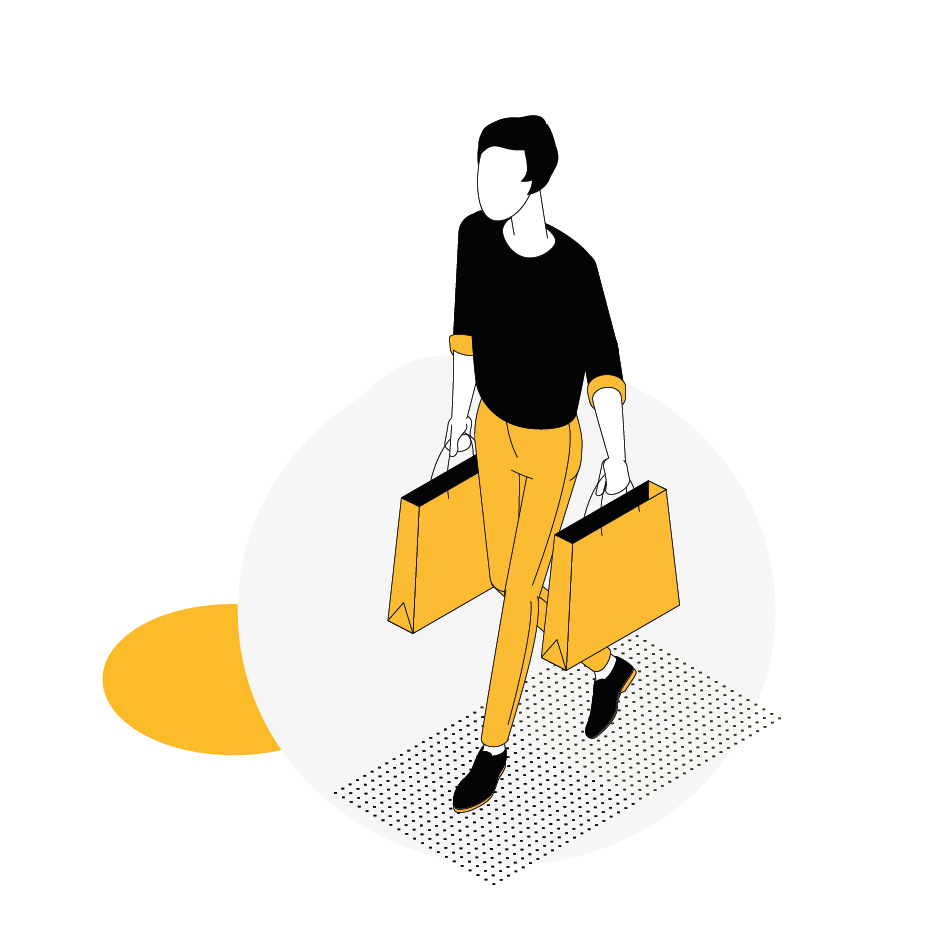
Persons
Research and data collecting allow us to create specific personas. Thanks to this individualization, our project includes the needs of a specific group of recipients.

Customer journey
We define the broad context of contact points between the user and specific product or service. This way, we better understand our user’s perception and any difficulties they may encounter.

User flow
We create user paths, so we can map and visualize the actions performed by the user. We identify areas that can be improved, and we visualize the needs.
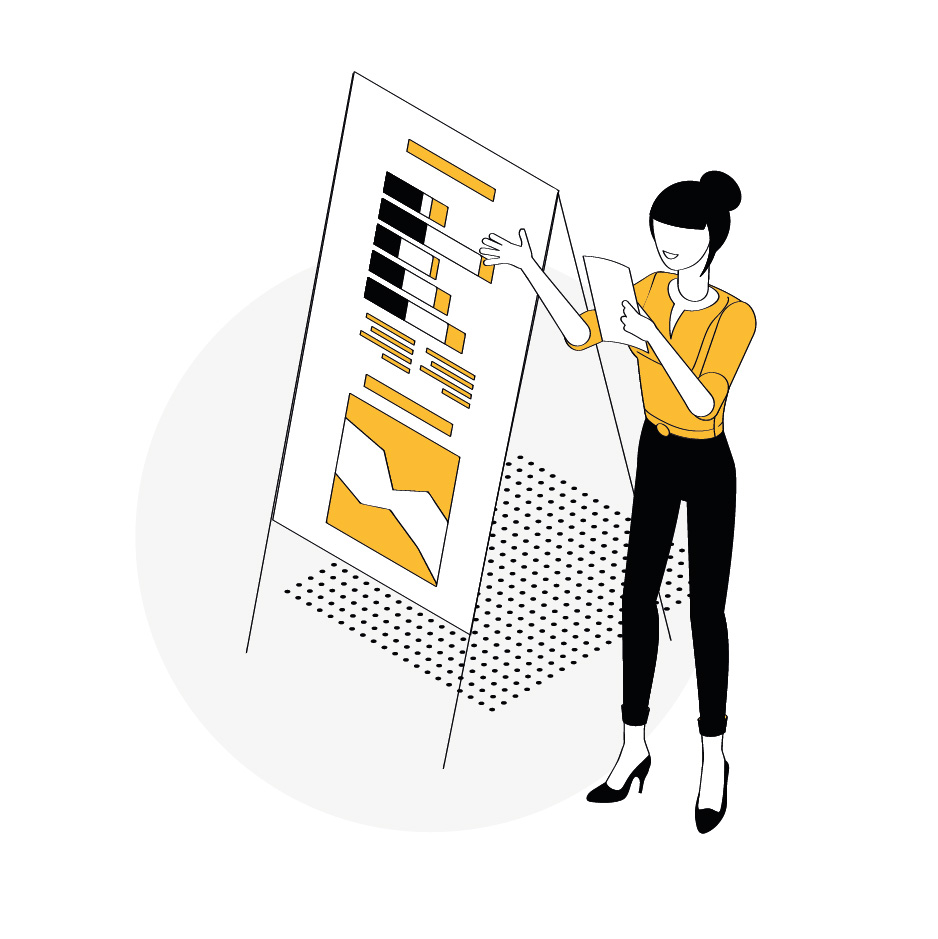
Work schedule
The documentation collected during each stage helps us to create a plan for further joint work. When we specify deadlines and implementation details, we can better control and organize the exchange of information between the parties involved in the project.
We design
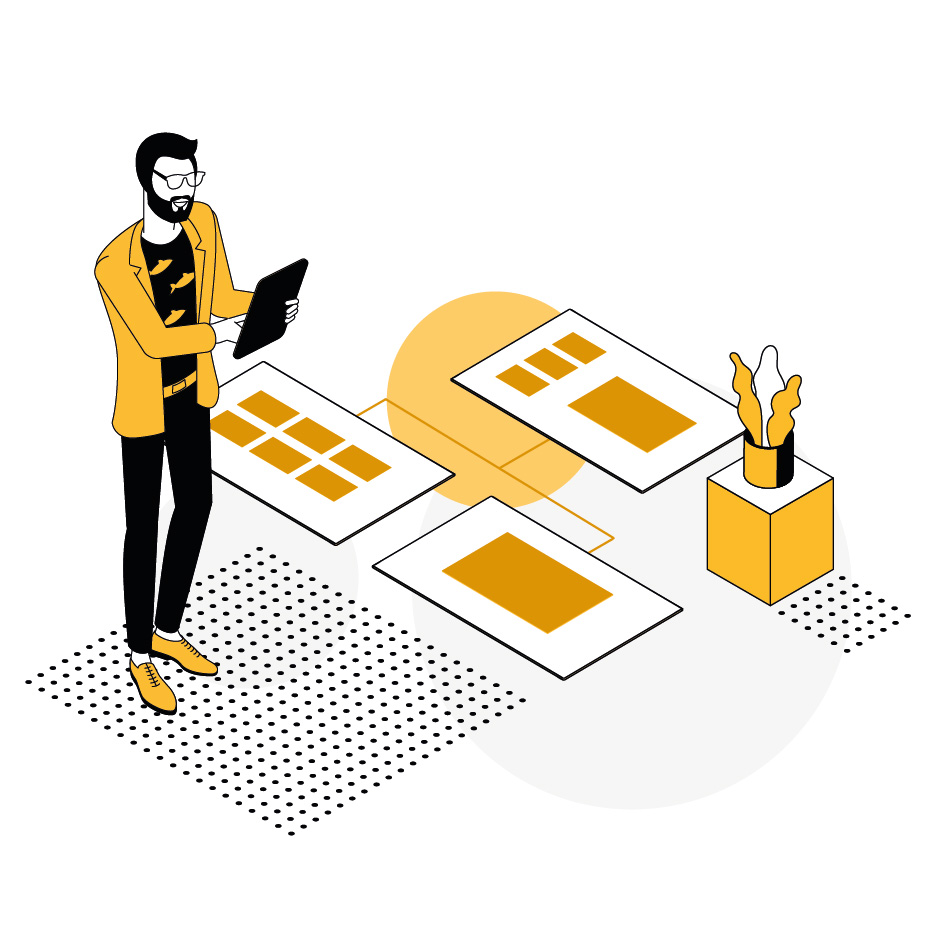
Information Architecture
During each stage of work, we collect key information that allows us to build the information architecture. We strive to create the most understandable structures possible, thanks to which the user is able to easily navigate through the website.

LoFi/HiFi mockups
The first step to verify our ideas is preparing low-fidelity mockups that are less time-consuming – they let us run quick tests in a shorter period of time. Our next step is creating high-fidelity mockups.

Prototypes
We create prototypes that accurately represent the final product, and we use them in usability tests. This allows us to check solutions in action with specific users.

Usability testing
We use a ready-made prototype that accurately represents the final product to conduct tests with users. Thanks to this, we can check if there is anything else that needs to be improved in the final product. This way we can avoid unnecessary and costly corrections after the project release.

UI design
The utility of the design is extremely important, but so is its aesthetics and visual side. We take care of every detail. The latest design trends inspire us to develop products that are not only useful, but also visually attractive.
We deliver

Project execution based on developed material
After our mock-ups and graphic designs get a mutual approval, it is time to implement them into reality. We have experience in implementing projects both with our own team of developers and with external companies.

Test of the completed project
Launching a project does not mean the end of the work. We conduct tests to check the stability, correct operation, and security. We make sure everything works as planned at the beginning!
We work closely with the client at each stage. We are in constant contact, informing about the progress of the work carried out. We accept them together and constantly exchange the necessary knowledge.
I want to cooperate
Analysis
We use quantitative and qualitative data that allow us to better understand the behavior of users when they use given product or service. We analyze data, recordings of sessions with users and heatmaps - it gives us an insight into recipients’ behavior. Identifying key processes and crisis points in the current process is essential for product development and help us determine if we are going in the right direction.






Competitor Analysis
Competition analysis helps us to identify their strengths and weaknesses. At this stage, we also define the standards specific for the studied market area. This way we are able to create a project that stands out from the competition, and at the same time is easy to understand for a typical recipient interested in a given subject.
Workshop before the kick-off
Thanks to workshop meetings, we develop a vision of the project execution which is mutually agreed upon. This is where your needs and expectations meet our knowledge and competences. We create a common vision on which we base our further actions.
Audit
We conduct an in-depth, multi-format analysis to assess the usability of the website or service under study. In this process, we use our knowledge, the latest trends, and heuristics.
Quantitative research
We use quantitative methods that allow us to discover the behavior and needs of users. We use tools such as Google Analytics, Hotjar and Fullstory. We also conduct A / B tests. See our analytics.
Qualitative research
Thanks to our qualitative research, we are able to get to know users even better. We conduct individual in-depth interviews, contextual interviews, card sorting, as well as scenario research with eyetracker. The data collected during the research is an invaluable source of knowledge needed to design well thought out solutions.
Eyetracking
We have the knowledge and tools that allow us to conduct research with eyetracker. This method helps us to check exactly what users’ eyesight is focused on and how they consume the content presented. This way we can pick up all uncontrolled reactions.






Persons
Research and data collecting allow us to create specific personas. Thanks to this individualization, our project includes the needs of a specific group of recipients.
Customer journey
We define the broad context of contact points between the user and specific product or service. This way, we better understand our user’s perception and any difficulties they may encounter.
User flow
We create user paths, so we can map and visualize the actions performed by the user. We identify areas that can be improved, and we visualize the needs.
Work schedule
The documentation collected during each stage helps us to create a plan for further joint work. When we specify deadlines and implementation details, we can better control and organize the exchange of information between the parties involved in the project.




Information Architecture
During each stage of work, we collect key information that allows us to build the information architecture. We strive to create the most understandable structures possible, thanks to which the user is able to easily navigate through the website.
LoFi/HiFi mockups
The first step to verify our ideas is preparing low-fidelity mockups that are less time-consuming – they let us run quick tests in a shorter period of time. Our next step is creating high-fidelity mockups.
Prototypes
We create prototypes that accurately represent the final product, and we use them in usability tests. This allows us to check solutions in action with specific users.
Usability testing
We use a ready-made prototype that accurately represents the final product to conduct tests with users. Thanks to this, we can check if there is anything else that needs to be improved in the final product. This way we can avoid unnecessary and costly corrections after the project release.
UI design
The utility of the design is extremely important, but so is its aesthetics and visual side. We take care of every detail. The latest design trends inspire us to develop products that are not only useful, but also visually attractive.





Project execution based on developed material
After our mock-ups and graphic designs get a mutual approval, it is time to implement them into reality. We have experience in implementing projects both with our own team of developers and with external companies.
Test of the completed project
Launching a project does not mean the end of the work. We conduct tests to check the stability, correct operation, and security. We make sure everything works as planned at the beginning!
We work closely with the client at each stage. We are in constant contact, informing about the progress of the work carried out. We accept them together and constantly exchange the necessary knowledge.
I want to cooperate


